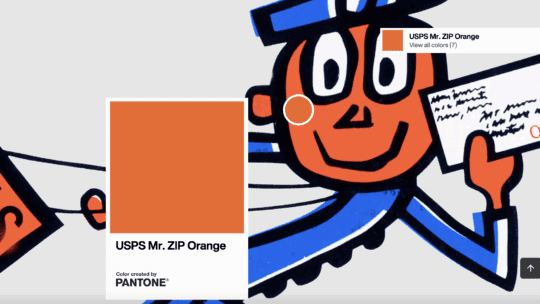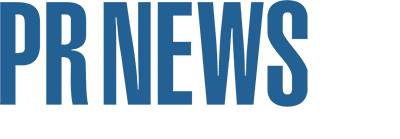
This week's PR Roundup explores some fresh takes about the American Eagle/Sydney Sweeney situation, Vogue getting roasted for publishing a Guess ad featuring a model created by AI, and a partnership between USPS and Pantone celebrating the former's big 250th birthday.
Audience Lessons from American Eagle, Dunkin and Ralph Lauren: Contrasts in Approach
What happened: Unless you’ve been living in a cave this week, you're aware that American Eagle’s new fall campaign, headlined by actress Sydney Sweeney, has tongues wagging across the PR industry. The tagline “Sydney Sweeney Has Great Jeans,” hinges on a pun between “jeans” and “genes.” The blond hair and blue eyes visuals prompted critics to accuse the campaign of echoing eugenics rhetoric and reinforcing Eurocentric beauty ideals. Despite the uproar, the brand and Sweeney have remained silent on the criticism.
Shortly after the AE fallout, Dunkin’ released a social‑media ad featuring Gavin Casalegno promoting its Golden Hour Refresher drink. Casalegno sits poolside and quips, “This tan? Genetics. I just got my color analysis back…golden summer.” Viewers immediately raised concerns that the ad, especially released so soon after the Sweeney campaign, played into the same coded language celebrating genetic traits tied to whiteness. Critics across TikTok and Reddit branded it tone‑deaf and poorly timed.
Conversely, Ralph Lauren released a new campaign this week, leaning into diversity as other companies shy away. According to Inc. Magazine, the company’s new Oak Bluff collection, named after the town on Martha’s Vineyard (a popular vacation destination for affluent Black Americans), offers a limited-edition line—which is part of the brand’s partnership with Morehouse and Spelman colleges. The ads feature and celebrate a vibrant, Black community.
Communication takeaways: These twin controversies spotlight a growing sensitivity around brands referencing genetic traits in marketing—especially when tied to actors embodying traditional Western beauty standards. The backlash—even if unintended—has elevated both campaigns into broader cultural debates about identity, representation and the line between clever wordplay and harmful messaging.
Myles Worthington, CEO and Founder of Worthi, calls the AE brand’s approach “lazy and uninformed.”
“They went hyper broad and seemingly safe—relying on wildly archaic philosophies around “sex sells,”" Worthington says. “This is not the 1980s. When you look at other apparel brands who bring celebrities in nowadays, they do it in a way that's interesting and not always "America's sweetheart" in vibes—and those are more successful and authentic.”
Worthington also says it’s surprising that Dunkin' decided not to pull the ad with the current media storm surrounding AE.
“They had so much time, I do not understand that choice in the least,” he says. “Actually, yes I do—in both "rooms" I doubt there was anyone who could see the issue because it wasn't an issue to them based on their mostly lived experiences.”
Worthington says the failure in strategy for both brands is that they failed to understand major facts in speaking to addressable audiences.
“Going broad and trying to speak to everyone means you're actually speaking to no one,” he says. “You reach the masses by creating a deeply resonant connection with a specific audience that can then create the mass awareness for you, in a more authentic and long-lasting way than you could ever accomplish on your own. Meaningful cultural moments start with a specific community and ripple outward—not the other way around.”
Also the silence from these brands is a cause for concern amongst the social media chatter in the PR industry.
[Editor's update: American Eagle released a statement in an Aug. 1 Instagram post.)
View this post on Instagram
“The length of time of silence is so damning,” Worthington says. “At this point, they have to say something if they have any hope of taking the steps to dig out. I mean, what I would do is release a joint statement with Dunkin' and bring some levity to it so they can really sit in the [mistake].”
Fake AI Models in Guess Ad Provoke Outrage
What happened: In additional fashion news, Vogue is also facing backlash after running a two-page ad in its August issue featuring an AI-generated model promoting Guess clothing. Created by AI-driven marketing and design agency Seraphinne Vallora, the model—blonde, blue-eyed and flawless—sat next to a very tiny AI disclosure, which many readers easily missed. It’s the first AI-generated model fashion ad to be published in a mainstream publication. The ad also ignited a conversation around AI perfection and unachievable beauty standards.
Communication takeaways: For PR pros, the uproar is a cautionary tale, particularly as AI is more easily adapted into the mainstream. While AI may offer cost and creative flexibility, the Vogue incident shows how it can also erode trust, particularly when it replaces real people and fails to consider transparency. Brands experimenting with AI-generated talent must weigh innovation against audience perception—and credibility.
Carreen Winters, President, Corporate Reputation at MikeWorldWide, says the backlash over AI models reveals more about our fear of being replaced than it does about beauty standards.
“Let’s be honest, supermodels have never represented the average woman,” Winters says.
“Fashion magazines have sold aspirational, often unattainable, beauty ideals for decades. AI doesn’t change that equation; it just updates the tools.”
And she notes that Guess did choose to disclose the use of AI in its campaign, something of an upgrade from fashion spreads of old.
“Have they ever disclosed Photoshop, filters or lighting tricks?” she asks. “Maybe AI is Guess’s “Gwyneth”—a calculated PR stunt that keeps us talking. And it’s working.”
AI disclosure is definitely something for PR pros to be on top of when it comes to audience trust, even if it's just in its infancy.
“The rules for what, when and how to disclose use of AI are still being written and largely dependent on usage,” Winters says. “It’s helpful to think about the audiences when considering the question of disclosure. Would they feel deceived to learn something was AI generated? Or would it be unimportant, such as using AI to edit something you’ve written with a prompt to edit for brevity and clarity? Transparency is always appropriate.”
Pantone and USPS Team Up to Tell a Story
What happened: This month (July) the United States Postal Service celebrates its 250th birthday. The organization decided a great way to retell the history and story of the USPS would be through color. And who is more known for color than Pantone? The two partnered up for a creative storytelling slant to celebrate the revered national institution that’s been moving the mail for decades.
Yvonne Yoerger, Director, Employee Communications and Content Management, USPS, says the color decisions and storytelling touchpoints were a group effort within the USPS Marketing and Corporate Communications teams.
“We identified key milestone moments in USPS history,” Yoerger says. “From an initial list of dates and artifacts, the team selected items that best represented the USPS legacy and had strong visual and emotional resonance. Together with Pantone, these items were then evaluated for their iconic coloration, and also reviewed by the USPS Corporate Historian.”
Next, Yoerger says, the Pantone Color Institute team worked closely with USPS to translate these historical colors into official, standardized Pantone colors.
“Each was chosen not only for visual fidelity, but also for its ability to convey the cultural and emotional significance of the Postal Service’s heritage,” she notes. “Through this collaboration, USPS was able to honor its legacy with colors that are both historically grounded and universally recognizable.”
Communication takeaways: A unique partnership is a highlight for any brand moment—the USPS and Pantone collaboration providing the perfect definition of that. Also, it works if said partners are already known for their expertise and can provide notable content.
Amity Kirby, USPS Manager, Licensing and Creative, explained why Pantone was the chosen partner.
“We were looking for a unique way to tell our 250-year history and hit another touchpoint in our storytelling,” Kirby says. “Pantone is the leader in color, and it was a natural fit.
Kirby says Pantone is hosting an interactive landing page that dives into the moments through visuals and stories, social media and editorial.
Also, a unique brand partnership can allow for a greater curiosity from the population.
“This way of storytelling is an unexpected and authentic way to get a brand story out to a wider audience by leveraging both Pantone’s and the USPS’s social connections,” Kirby says.
Nicole Schuman is Managing Editor at PRNEWS.
